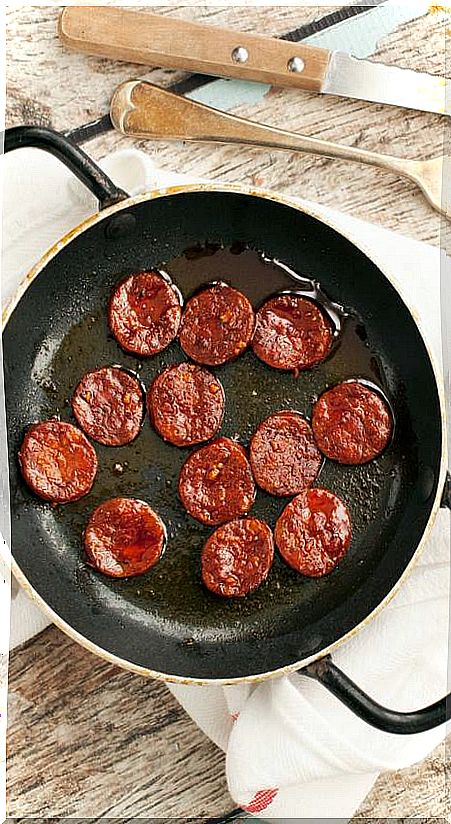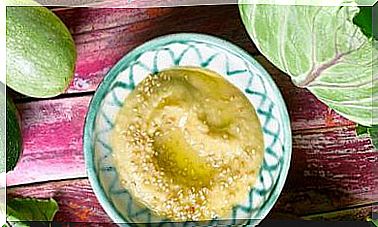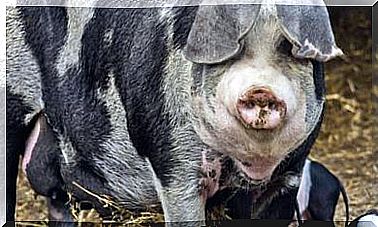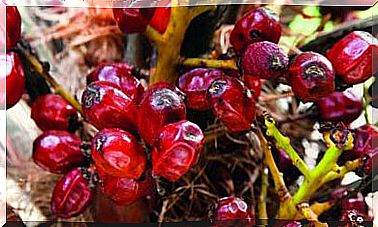Vegan Chorizo: How To Prepare The Perfect Sausage
When you are clear on how to prepare it, the recipe is up to you. You can make it gluten-free, based on tofu, with pumpkin, give it a Mexican touch …

Vegan chorizo is of vegetable sausages easier to make because its characteristic flavor and color , provided by a main ingredient: paprika smoked paprika or sweet red paprika.
From this spice, made with peppers that are dried and smoked, we can add chorizo flavor to everything we want, but also make our own homemade vegan sausages.
Vegan chorizo recipe
We already have the flavor (at least the main thing), we would lack the “filling”, the foods that we will combine so that we get a whole chorizo, not a mince.
Spice
In addition to the smoked paprika, we will need other spices in less quantity that form a good bouquet of aromas and flavors. For example, the most traditionally used:
- Sweet paprika
- Hot paprika (if you want spicy)
- Garlic
- Ground black pepper
- Thyme
- Oregano
- Vinegar
Adjusting the amount of spices to our liking is essential to get the chorizo that we want. Some are more aromatic than others, or spicier, acidic, or lighter or darker in color.
The flavor that should predominate is that of smoked paprika, followed by the others in just the right proportions to be noticed.
Fats
Commercial sausages are quite greasy, around 30% fat. It is one of the things that makes them palatable and characteristic (the typical chorizo stain that we get when we are little on our shirts or in our notebooks).
In traditional chorizos, more or less crushed fatty tissues are used, that is, fats that are usually solid at room temperature, and are mixed with the rest of the ingredients.
Its vegetable equivalent would be other solid fats at room temperature, such as coconut oil, vegetable margarines, palm oil or cocoa fat. Of course, these options, in addition to the fats, have flavors that we would not like to find in a chorizo, so it is preferable to look for alternatives. The best thing for this case is to use extra virgin olive oil, of a variety with a strong flavor, as it will give more body and a slight pungency to the final product.
If you want to add some solid fat to the dough, try small amounts of vegetable margarines, preferably with little flavor or aroma, but complement it with olive oil.
Structure
As main ingredients, to form the structure of a vegan chorizo, it is advisable to use foods rich in protein such as yuba (from soy), tofu, wheat gluten, textured soy, tempeh, etc.
Each of these ingredients contributes different things:
- The diced yuba is like some lean pieces that we find in chorizo.
- The crumbled tofu gives a soft and tender contrast, while whipped with the rest of the ingredients provides structure.
- The wheat gluten helps us to agglomerate all at once we give a meaty texture.
- The textured soy provides bits full of flavor and moisture that prevent the final chorizo from being a mere shapeless red mass.
- The tempeh, grated or in small pieces, can give a more complex flavor thanks to the mushrooms with which it is fermented.
To finish agglomerating the dough and improve its texture, we can add other ingredients such as oatmeal (in fine flakes or whole oat flour), cornstarch (it will help the dough to be firm and not crumble when cut), whole wheat flour wheat (small amount, only if necessary), ground almonds or almond flour (they will retain moisture) and knead them well by hand to mix and develop the desired texture.
How to cook it
As we have a raw dough, which cannot be eaten as it is, we need to put it through a first cooking process to form the vegetable chorizo bar. Then we can do whatever we want with it, cut and eat as is, fry it, grill it, etc.
The technique to make a bar is very simple, it is to close it like a candy wrapper. The dough is placed on a large sheet of food-grade aluminum foil (or heat-resistant film, or muslin suitable for cooking), compacts well so that there are no air bubbles, is rolled up and the ends are twisted to prevent it from coming out the filling and to force the cylindrical shape.
Once well closed, it can be steamed or boiled. I do not recommend it in the oven, especially if you use plastic or fabric. It is very likely to burn.
The cooking time will depend on the thickness of your chorizo or chorizos, in case you have divided the dough to make them in the shape of a sausage.
Once done, let it cool, remove the packaging and taste it. If you see that it is a bit creamy, it means that it needs more time. You can re-boil it without problems, just wrap it again.
Homemade vegan chorizos can be refrigerated (4-5 days in a tightly closed container) or frozen (up to 3 months in a tightly closed container), so they are very versatile, you can always have some on hand for those days when you don’t know what to do or you don’t have time.









